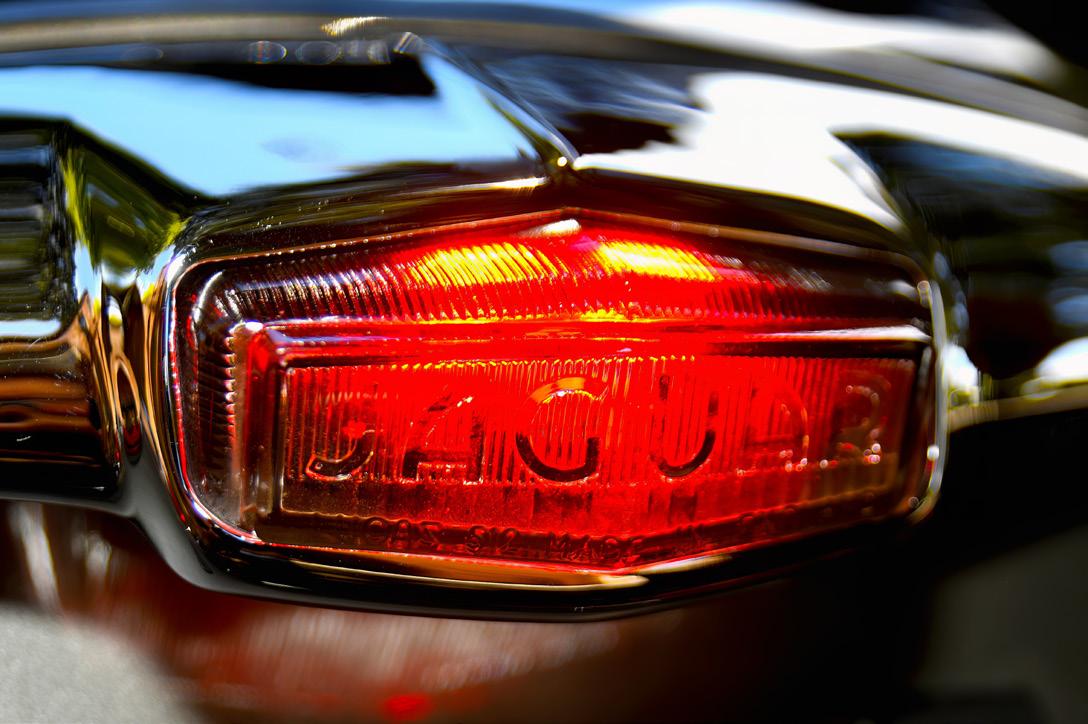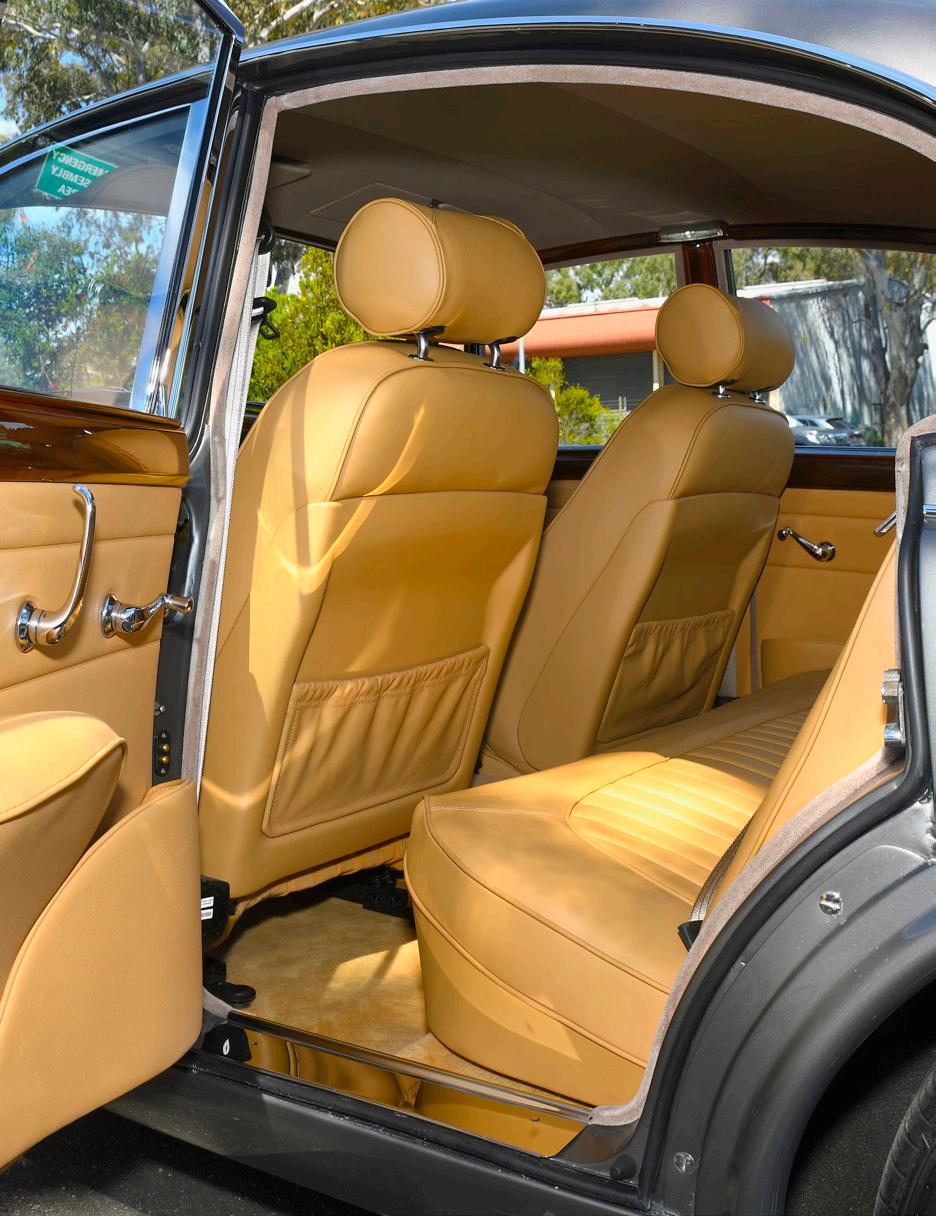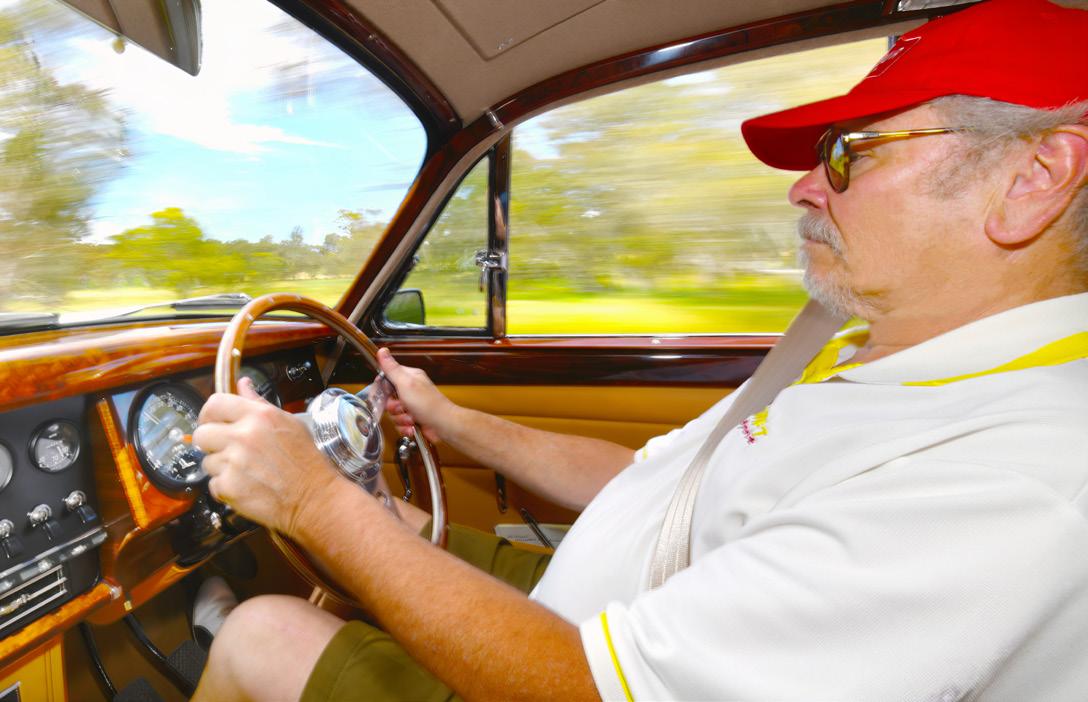
2 minute read
Finch Mk2 rejuvenation
01 The legendary 'Leaper' is synonymous with the Mk2 more than any other Jaguar. This one adorns the front on one of the very finest Mk2s in existence.
02/03/04 Looking very Jaguar with its replacement X300 front seats which add to the comfort and safety.
Advertisement
Paul Murrell loved the updates, but the car was too newly restored to push it too hard.
Atmospheric and quintessentially Mk2.
NO TWO CAR
Restorations
ARE EVER QUITE the same. And this owner knew exactly what he wanted for his early Jaguar Mk2.

It was hailed as one of the most advanced cars of its time, but modern motorists have expectations that would never have occurred to buyers in 1959. Anyone who thinks they can sit themselves in the opulent woodand-leather interior of a Mk2 and drive it like a modern saloon will be sadly mistaken. By current standards, the steering is vague and the brakes marginal. But it’s still a fast car; if contemporary road tests are to be believed, the Mk2 3.4-litre was able to reach 120mph (192km/h) – the 3.8 was even faster with a top speed of 125mph (200km/h). Handling was a huge step forward over the occasionally skittish Mk1, allowing drivers to exploit the performance with far greater confidence.


This particular Mk2 wasn’t bought specifically to be restored or up-graded. Instead, the 3.4-litre automatic had been a long-term family car for Chris Hatcher, chief winemaker at Wolf Blass Wines in South Australia’s Barossa Valley, but when the brakes failed some years ago and the car ended up stranded by the side of the road, his wife declared: “That’s it, time to get it done!”
Fortunately, Chris wasn’t misled by the various 'reality' car restoration shows. He knew it would be a long and expensive process. He also had a good idea of how he wanted it to proceed, and he was adamant that when complete, it would once again be an everyday driver.
It took even longer than he planned.
Shane Reynolds of Finch Restorations in Mt Barker, South Australia, takes up the story. “When it came to us, it had been at another shop. It was stripped, some repairs done and then it was left in primer for 20 years.”
The first challenge facing Finch Restorations was to get the car straight, and work out how to incorporate all of Chris’s demands. “He knew what he wanted,” recalls Shane, “and had researched other up-graded Mk2s such as the Beacham cars. We started with an accurate brief of where he wanted to go with it.” After a moment’s hesitation, Shane adds, wryly: “We probably need to learn to say 'no' a bit more!”
Like most owners starting a restoration, Chris thought costs could be kept down by cutting a few corners, but as the process developed, he started to understand that can be short-sighted, and quite often










